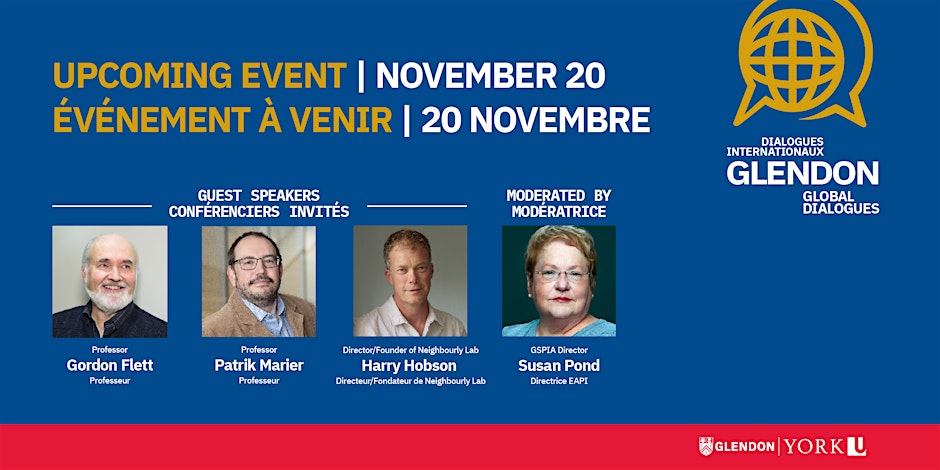
In a world more connected than ever, why are we feeling so alone? The Glendon Global Dialogues on November 20th will explore the startling rise of loneliness and its far-reaching consequences.
There are over 8 billion humans on the planet. Over half of us are in urban areas and have internet access. This begs the question – why are we feeling so lonely?
A Concerning Trend of Solitude
Despite living in an era of unprecedented connectivity, many of us find ourselves grappling with an invisible yet profound crisis – loneliness. According to the World Health Organisation (WHO), this pervasive sense of isolation transcends age, income, and geography, impacting teens, young adults, and seniors alike across the globe. The statistics are staggering. A 2021 Statistics Canada survey revealed that more than one in ten Canadians aged 15 and older reported feeling lonely "always or often." In the United States, research indicates that between 2003 and 2020, the average time young people spent with friends face-to-face declined by a staggering 70%. Ironically, the very technology designed to foster connections may be contributing to our sense of disconnection.
The Hidden Toll on Health and Well-Being
Loneliness is more than just a mental health concern; it carries severe physical consequences as well. Among teenagers, it can lead to depression and self-harm, while for adults, it increases the risk of heart disease, stroke, and dementia. Some experts have likened the effects of loneliness to smoking a pack of cigarettes daily. Beyond personal health, loneliness also exacts a hefty economic toll. The UK estimates that it costs employers over $4 billion annually due to sick days, decreased productivity, higher turnover rates, and the added burden of caring for those suffering from loneliness.
Designing for Connection: Rethinking Our Communities & Reimagining “The Third Place”
As societies grapple with the challenges of an aging and increasingly isolated population, there is a growing recognition that the built environment plays a crucial role in fostering or hindering social connections. Can we "design out" loneliness from our communities? Do urban planners and architects have the tools and understanding necessary to create spaces that promote meaningful connections? While accessibility has long been a priority in urban design, it's time to consider incorporating codes and guidelines that actively encourage social interaction and foster a sense of belonging.
A Global Call to Action
Recognizing the urgency of this issue, the WHO has established an International Commission on Social Connection, while countries like Japan and the UK have appointed Ministers for Loneliness. Even New York City has created the first-ever Master Plan for Aging and appointed Dr. Ruth Westheimer as their Loneliness Ambassador. As Canada grapples with an aging population and an already strained public healthcare system, it's time to ask:
What steps should our nation be taking to address this silent crisis? This will be the overarching question we’ll be exploring at the Glendon Global Dialogues on November 20th.
Exploring Solutions and Strategies
Our three guests will explore different aspects of loneliness, its implications for public policy, and the potential role of technology in mitigating this growing challenge:
• Harry Hobson, Director of Neighbourly Lab, UK
• Dr. Patrik Marier, Professor of Political Science at Concordia University & author of "The Four Lenses of Population Aging"
• Dr. Gordon Flett, professor in the Department of Psychology at York University We invite you to join the discussion on the 20th as we dissect the loneliness crisis and uncover paths towards a more connected, thriving society.

